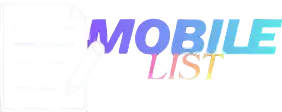Ending a business email properly is just as important as the content of the email itself. The way you conclude your message can leave a lasting impression on the recipient and influence their perception of you and your professionalism. In this article, we’ll explore the different ways to end a business email in English and provide tips to help you choose the most appropriate sign-off for your specific situation.
Choosing the Right Sign-off
The choice of sign-off for your business email should be based on several factors, including the relationship you have with the recipient, the purpose of the email, and the overall tone of the message. Here are some common sign-offs and when to use them:
Formal Sign-offs
- Sincerely: This is a classic and formal sign-off that works well in most business situations, particularly when corresponding with someone you don’t know well or in more formal contexts.
- Best regards: This is another common formal sign-off that conveys a polite and professional tone.
- Respectfully: This sign-off is appropriate when writing to someone in a position of authority, such as a supervisor or a high-level executive.
Semi-Formal Sign-offs
- Kind regards: This sign-off strikes a balance between formal and friendly, making it suitable for most business email exchanges.
- Regards: This is a simple and versatile sign-off that can be used in a variety of business contexts.
- Thank you: This sign-off is appropriate when you Homeowner Database are requesting something from the recipient or expressing gratitude.
Informal Sign-offs
- Cheers: This sign-off is more casual and can be used APIs from PostgreSQL databases in less formal business situations, such as when corresponding with colleagues or clients you have a close relationship with.
- Best: This is a concise and friendly sign-off that can be used in more casual business settings.
- Have a great day/weekend: These sign-offs add a personal touch and can be used when you want to end the email on a positive note.
Crafting the Perfect Closing
When drafting the closing of your business email, keep the following tips in mind:
- Match the Tone: Ensure that your sign-off aligns with the overall tone of your email. Formal messages should use formal sign-offs, while more casual emails may benefit from a more relaxed closing.
- Personalize it: If appropriate, you can personalize your sign-off by adding a brief sentence or phrase. Therefore, such as “I look forward to hearing from you” or “Let me know if you have any other questions.”
- Keep it Concise: Your sign-off should be succinct and to the point. Avoid lengthy or overly wordy closings, as they can come across as insincere or distracting.
By following these guidelines. You can ensure that your business emails leave a positive and lasting impression . Therefore, on your recipients your professionalism and attention to detail.

